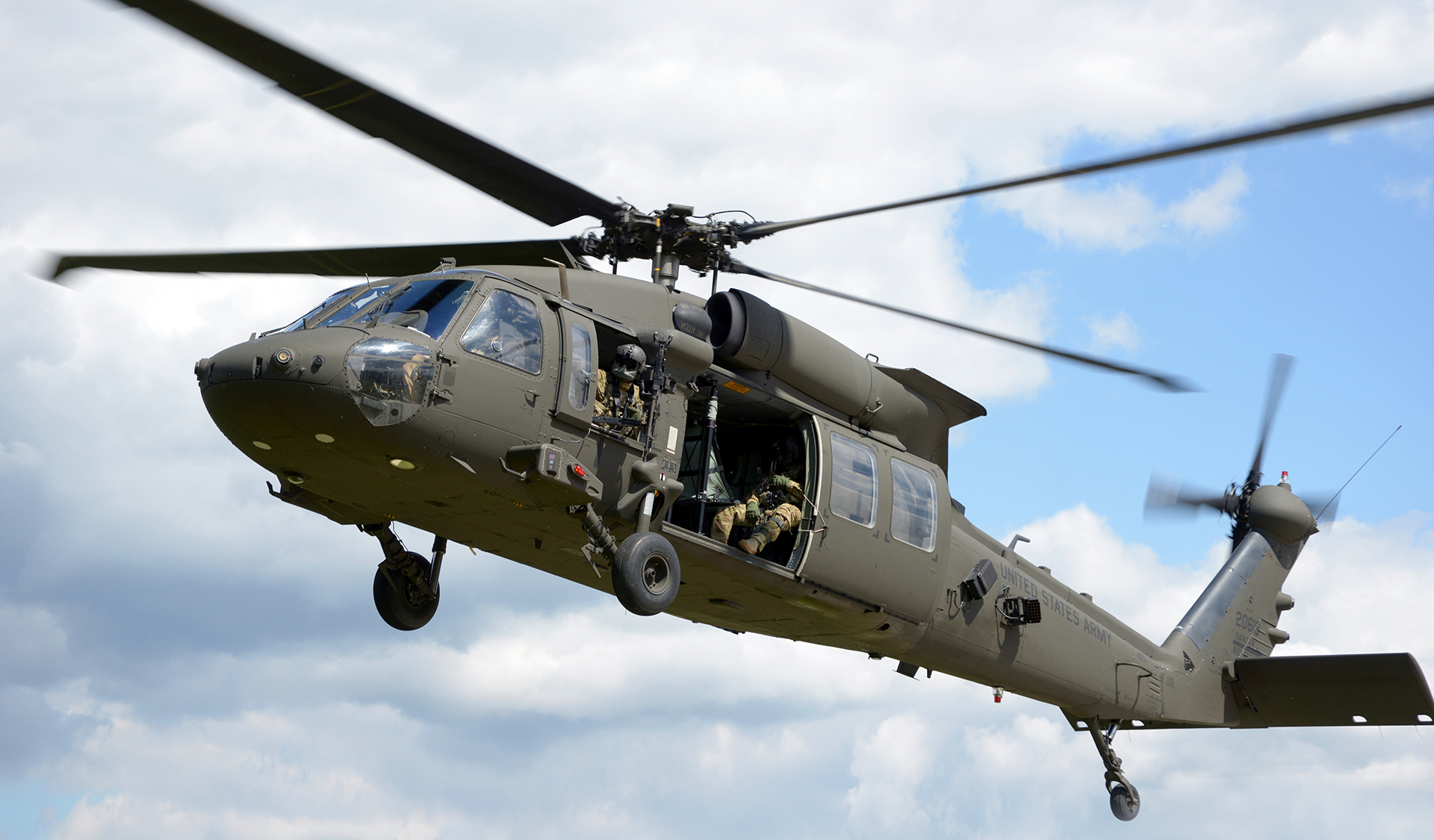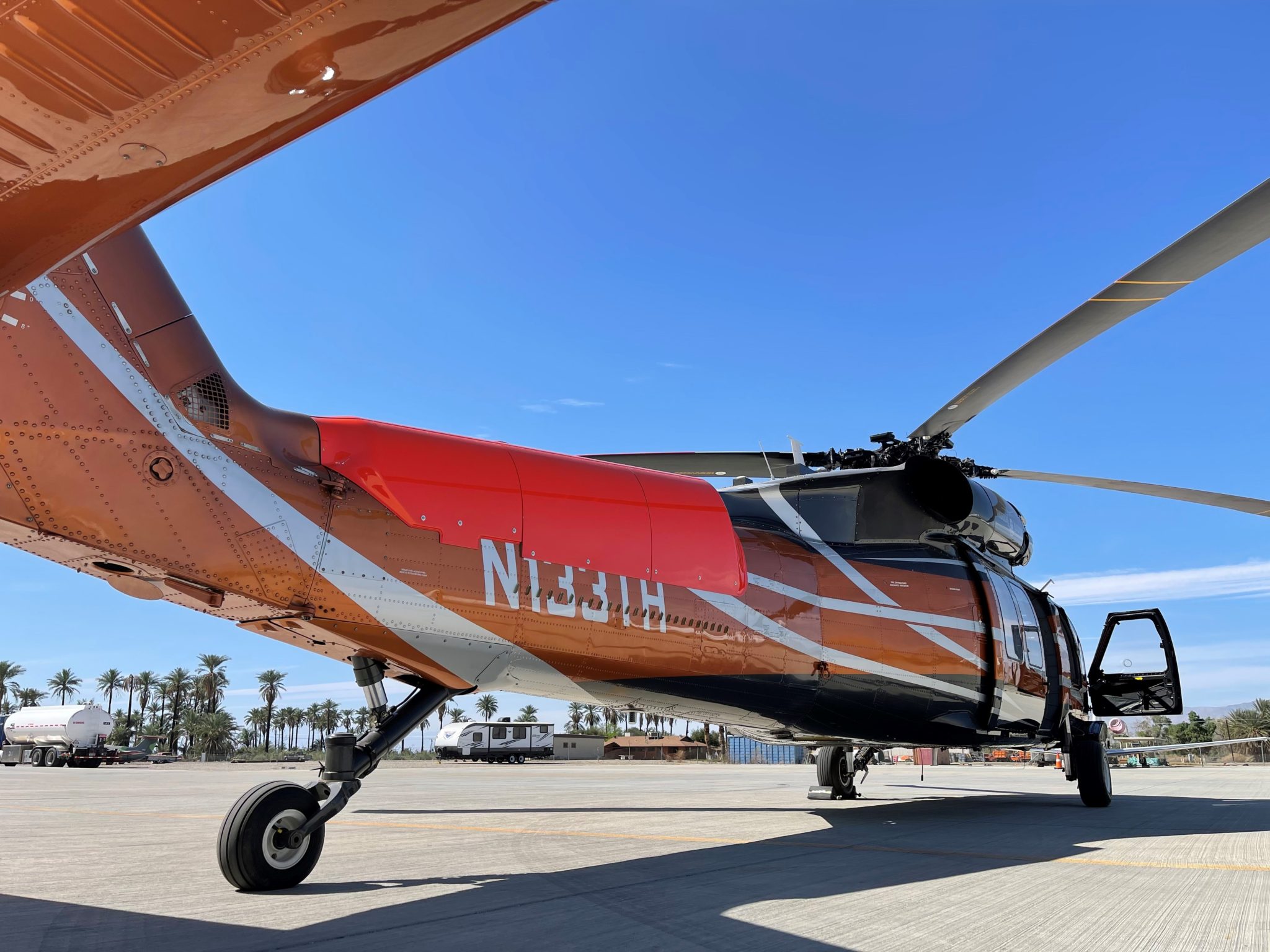The Function of the UH 60 in Modern Armed Force Operations
The UH-60 Black Hawk has actually arised as an indispensable part of contemporary armed forces operations, showing unmatched convenience in a range of tactical environments. The Black Hawk's innovative modern technology and flexibility to diverse fight situations highlight its tactical relevance.
History of the UH-60
The UH-60 Black Hawk's development noted a considerable advancement in armed forces aviation, advancing from the requirement for a functional utility helicopter that can support a wide variety of operational needs. Initiated in the very early 1960s and late 1950s, the U.S. Army looked for a replacement for the aging Bell UH-1 Iroquois. The layout aimed to attend to the increasing intricacy of military procedures throughout the Cold Battle, necessitating a platform efficient in troop transportation, medical discharge, and cargo lift.
The Sikorsky Airplane Company was awarded the agreement in 1972, resulting in the initial trip of the prototype in 1974. The UH-60 got in solution in 1979, swiftly establishing itself in different fight and humanitarian objectives - uh 60. Its sturdiness, rate, and advanced avionics made it a crucial asset in the U.S. armed force's arsenal, especially throughout problems such as the Gulf Battle and operations in Iraq and Afghanistan
Throughout the years, the Black Hawk has actually undergone various upgrades and versions, guaranteeing its relevance in modern warfare. As armed forces demands remain to evolve, the UH-60 remains an important part in the functional capacities of the armed forces.
Key Functions and Specs

The UH-60 has a maximum departure weight of 22,000 pounds, allowing it to bring a substantial haul, including soldiers, equipment, and medical products. It can fit approximately 11 soldiers in its troop area, reflecting its ability to support varied functional needs. The blades system, featuring a four-bladed major rotor and a four-bladed tail blades, adds to enhanced security and maneuverability in numerous environments, consisting of hilly and urban terrain.
In addition, the helicopter is furnished with sophisticated avionics and navigation systems, improving situational awareness and functional effectiveness. The mix of these specs emphasizes the UH-60 Black Hawk's critical duty in modern military air travel, making it a vital property for armed forces worldwide.
Tactical Responsibility in Fight
Regularly released in different fight scenarios, the UH-60 Black Hawk offers multiple tactical functions that boost its value on the field of battle. Largely recognized for troop transport, this functional helicopter successfully moves personnel and equipment into and out of hostile atmospheres, making sure fast action capacities. Its capacity to run in both night and day problems, paired with innovative avionics, permits specific insertion and removal of pressures.
In enhancement to troop transport, the UH-60 is geared up for medevac operations, offering important assistance to wounded soldiers during combat. With specialized clinical tools and employees onboard, the Black Hawk can promptly evacuate casualties, dramatically raising survival prices.
Furthermore, the Black Hawk plays a crucial duty in logistical support, delivering products and ammunition directly to frontline devices. Its durable style enables it to lug considerable hauls, helping with continual operations in austere problems.
The helicopter also works as a system for close air support, integrating with ground forces to offer airborne reconnaissance and fire support. This complex ability emphasizes the UH-60's crucial function in modern armed forces operations, adapting to the developing characteristics of battle.
Humanitarian and Rescue Objectives
Humanitarian and rescue goals are important elements of the UH-60 Black Hawk's functional abilities, showcasing its flexibility past combat duties. The airplane's design enables it to effectively carry workers, materials, and clinical equipment, making it an indispensable asset in situation circumstances. In disaster-stricken locations, the UH-60 can deliver important help, including food, water, and medical aid, directly to influenced populations.
In Addition, the Black Hawk masters search and rescue procedures. Its all-weather capabilities and innovative avionics enable it to carry out missions in try this site challenging settings, whether hilly terrain or negative climate condition. This flexibility is better enhanced by its ability to deploy specific rescue groups and hoists, making certain rapid extraction of individuals in distress.
The UH-60's capacity to operate in next both metropolitan and remote places promotes prompt responses to emergencies, including natural disasters, humanitarian crises, and medical evacuations. Its role in these missions not only saves lives however likewise promotes goodwill and enhances area relationships. Eventually, the Black Hawk's contributions to humanitarian and rescue initiatives highlight its value as a multi-role system within contemporary army operations, strengthening its commitment to support and shield civilian populations in need.

Future Developments and Innovations
As military technology consistently advances, the UH-60 Black Hawk is positioned to undertake considerable future growths and innovations that will certainly improve its abilities. Key innovations are anticipated in avionics, propulsion systems, and materials, ensuring the Black Hawk continues to be an essential possession on the battleground.
One considerable location of focus is the integration of innovative avionics, including enhanced situational recognition systems and fabricated intelligence-driven navigating tools. These innovations will certainly improve functional effectiveness and decision-making throughout complicated missions. In addition, upgraded propulsion systems might use greater gas efficiency, expanded range, and boosted general performance, enabling the helicopter to operate in varied atmospheres.
In addition, the advancement of composite products and advanced production strategies guarantees to decrease the airplane's weight while preserving structural stability - uh 60. This decrease will boost flight features and operational flexibility

Jointly, these innovations will guarantee that the UH-60 Black Hawk remains a keystone of contemporary military procedures well into the future.
Conclusion
The UH-60 Black Hawk stays indispensable to modern armed forces procedures, showcasing versatility in combat and support duties. The Black Hawk's effectiveness in humanitarian and rescue initiatives emphasizes its significance beyond the battleground.
The UH-60 Black Hawk has actually arised as an indispensable component of modern armed forces operations, showing unmatched versatility in a range of tactical atmospheres.The UH-60 Black Hawk's advancement noted a considerable innovation in army aeronautics, evolving from the need for a versatile utility helicopter that could support a wide array of functional demands.Remarkable for its convenience and efficiency, the UH-60 Black Hawk includes an array of requirements that improve its effectiveness in various military operations.Altruistic and rescue goals are critical parts of the UH-60 Black Hawk's functional abilities, showcasing its adaptability beyond combat roles.The UH-60 Black Hawk continues to be indispensable to modern-day armed forces operations, showcasing versatility in combat and support roles.